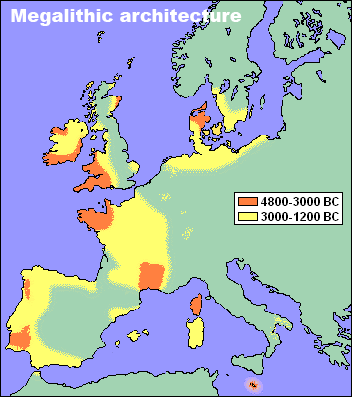
Megaliths
Megalithic Travel Suggestions
A paper in PNAS, the Proceedings of the National Academy of Science, in April 2019 described how studies in archaeology and genetics show that Neolithic culture spread from the Fertile Crescent through Anatolia and the Aegean into Europe around 9000 BCE. It reached northwestern Europe including Britain and Scandinavia around 4000 BCE.
A pattern of megalithic monuments arose, especially for funerary purposes, around 4500 BCE in France, 3700 BCE in Britain, and 3600 BCE in Scandinavia.
The genetics and physical characteristics of individuals buried in megalithic tombs in Europe suggest that the societies constructing these tombs were socially stratified Neolithic farming cultures.
The 2019 paper presents evidence of a genetic connection across these megalithic peoples, indicating that the tradition had a single origin. The farming megalithic builders had moved into the territory of hunter-gatherer societies.
Much later, around 300 CE, the Yayoi people in Japan began building distinctive megalithic tombs covered with keyhole-shaped earth mounds.

Map of megalithic cultures in Stone Age Europe.